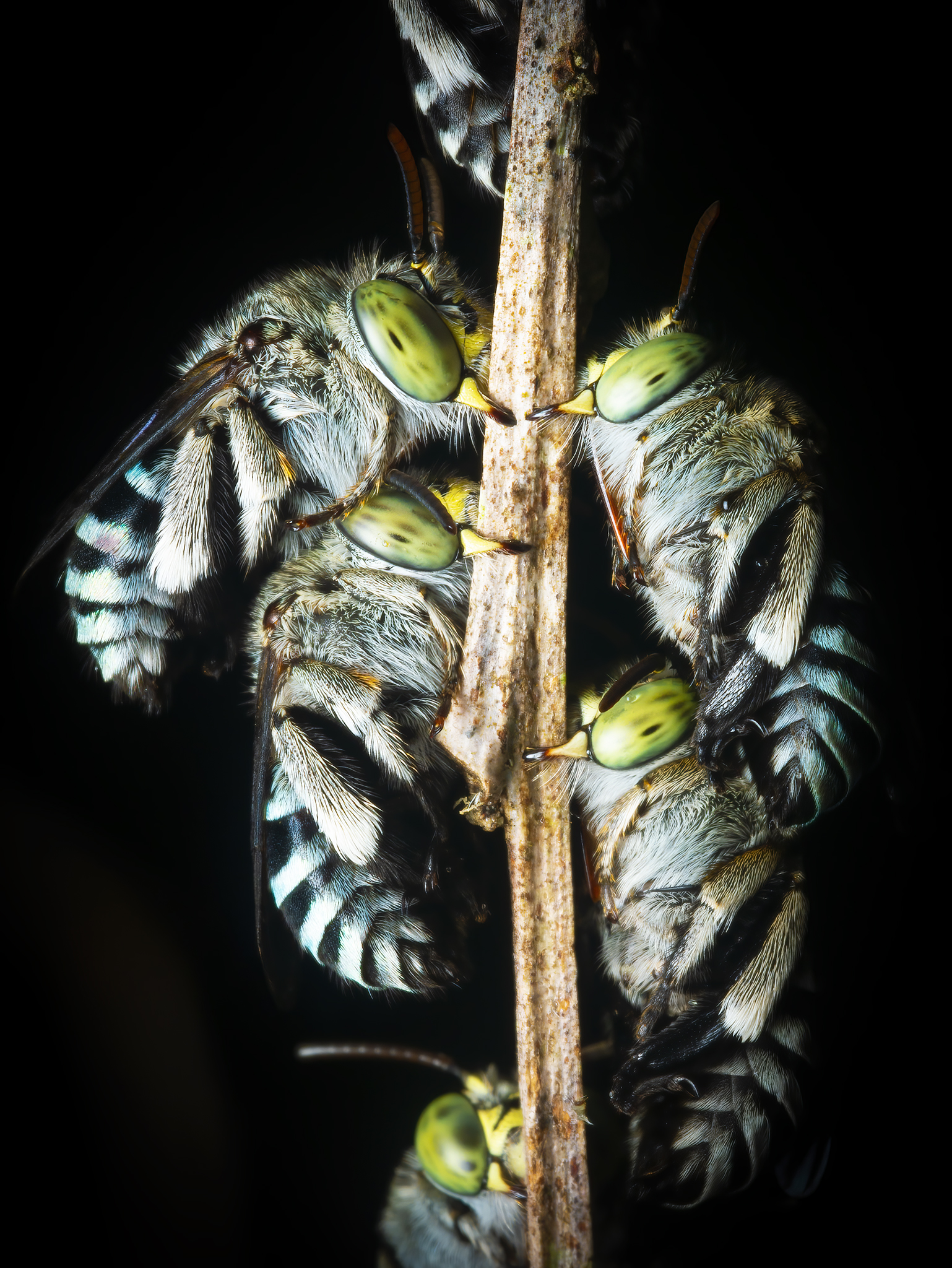Bue-Blanded Bees… Blue-Banded Blees… Bue-Blanded Blees… BLUE-BANDED BEES!!
Blue-Banded Bees are Australia’s cutest bee. I haven’t met all of the other bees, but I’m calling it. Blue-Banded Bees are the best. And here is why…
1. Look at them!
Aren’t they adorable? They’re so fluffy.
2. They use their chompers for sleeping.
For most animals, it’s a bit tricky to sleep while holding onto a branch. Not for the Blue-Banded Bee though – they just chomp down on the branch and lock themselves in for the night.
3. Male bees sleep in clusters.
Blue-Banded Bees don’t form hives, however male bees will bunch together in groups of up to 25 in order to sleep. Each time a new bee arrives, the other bees will vigorously shake themselves, but eventually they tuck themselves in and settle down for the evening.
4. They’re blue!
When we think of bees, we usually think of yellow or orange bees with black stripes. But Blue-Banded Bees don’t play by your rules. They forge their own destiny. Each individual hair has microscopic diagonal stripes which create the bees’ unique colouration.
5. Alliteration.
If you’re a close reader of my posts, you’ll notice that I absolutely adore an artistically-arranged alliteration. So it obviously helps that Blue-Banded Bees are bodaciously bad-ass beat poets with a creatively choreographed cognomen.

Blue-Banded Bees are also vital to the world’s ecosystems due to a unique ability called buzz pollination. The majority of flowers have open-access to their pollen. This allows most bees, including the common European Honey Bee, to simply land on the flower and collect pollen on fine hairs via electrostatic forces. The bee then scrapes the pollen off with its legs and conveniently stores it for transportation. However, for around 9% of the world’s flowers, the pollination process is a little more complicated.
For these flowers, the pollen-containing parts are typically long tubes, with an opening at one end, and the pollen firmly attached to the inside. Buzz pollinators such as the Blue-Banded Bee have developed the ability to grasp the pollen-bearing tube with their jaws and vigorously vibrate in order to dislodge and release the pollen.
A wide range of flowers, including numerous Australian native plants, require this kind of pollination. This is also the case for a range of common veggie-patch occupants like tomatoes, potatoes and eggplant. While its important to encourage honey bees in your backyard, if you’re a keen gardener, you’d do well to create space for natives such as the Blue-Banded Bee to flourish as well.

As mentioned above, all the Blue-Banded Bees in these photos are male. We know this because it’s the males that sleep in clusters like this, but also because males have five stripes, whereas females only have four! I guess in the Blue-Banded Bee story of creation, it was Adam that was created out of one of Eve’s stripes (this would’ve at least been more plausible than the human bible, given that Homo sapiens of both sexes actually have the same number of ribs).
Female Blue-Banded Bees live more solitary lives than their male counterparts. After mating, the female will dig her own nest, usually in sheltered mud bricks or soft sandstone. She’ll then create round cells inside the burrow in which she’ll lay her eggs and place a small amount of pollen and nectar for the emerging bees to feed on.
She then caps the cells with a layer of soil, and the baby bees usually take around seven weeks to hatch. Amazingly, however, those laid in late autumn will remain in their cells over winter, only to emerge upon the arrival of spring!
–
Sleeping Blue-Banded Bees (Amegilla sp.), Berry Springs, Australia


